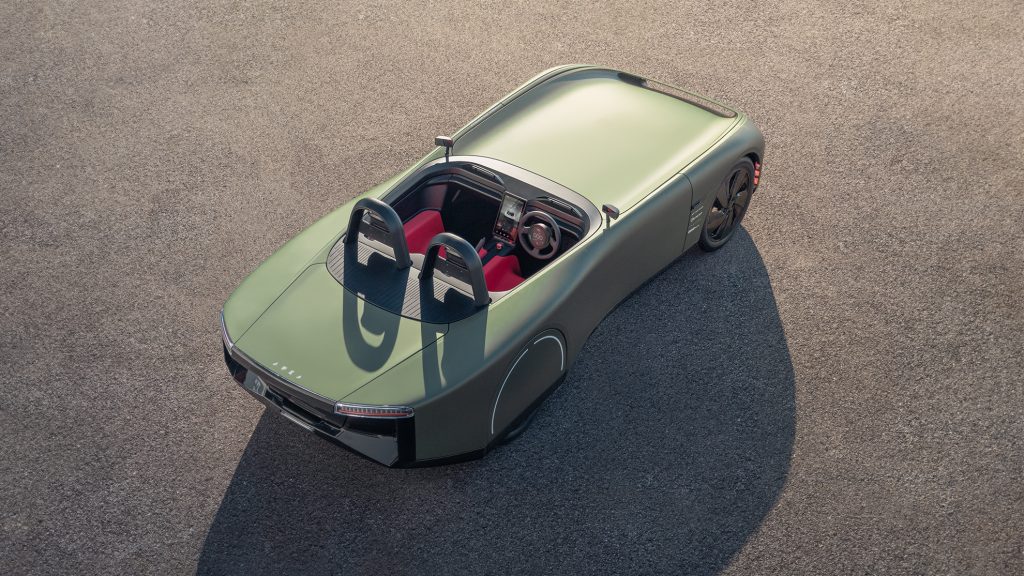A consortium of innovative British companies have teamed up during the pandemic to build Britain’s first long-range all-electric two-seater sports car.
With two 44kWh batteries, one front-mounted, the other under the chassis, the roofless car promises a range of 400 miles from just a single charge.
The four suppliers behind the Aura concept are Astheimer who led the design; Potenza Technology, which supplied the batteries and electric motors; BAMD Composites for the body panels; and Conjure who developed the Human-Machine Interface (HMI).
Funding for the road-legal concept was secured from the Office for Zero Emission Vehicles’ (OZEV) Niche Vehicle Network.
“Designed for nature” and with sustainability at its core, the Aura’s body panels are made from natural fibre composites and woven fabric that are “cleaner on the environment to produce and recycle compared to metal equivalents”.
Key to the car’s efficiency is its lightweight, low drag and slippery aerodynamic design that was tested using Computational Fluid Dynamics (CFD) technology.
The rear wheel covers, air curtains and a large rear diffuser were then added to reduce the vehicle's overall wake and increase its real-world range.
But where the Aura comes into a league of its own is with its unique HMI technology.
By connecting the driver to the vehicle and its surroundings means range and charge point anxiety can now be a thing of the past.
At the heart of the HMI is a 10-inch central touchscreen accompanied by a 5-inch circular self-levelling display within the steering wheel.
The software finds quickest, easiest charge points and also monitors the weather, your driving style and the surrounding environment to provide near-perfect energy optimisation mid journey.
This ensures drivers will never run out of electricity unexpectedly or have to wait for a charge point for longer than is necessary.
Currently, on-board energy optimisation data from many electric vehicles available today can be inaccurate as they do not analyse enough data sources outside of the vehicle such as the weather or location.
Chris Tingley, CTO of the company behind the HMI system, Conjure, said: “We know there’s huge potential for HMI systems to better connect the driver with the vehicle and their surroundings in the future. Until now, many HMI programmes, software, hardware, and user experience have been developed separately. We believe our approach of developing them as one element is a major steppingstone towards vehicles of the future.”
The Aura concept was showcased at the CENEX LCV show at Millbrook, and as of now, no performance specifications have been released, but for more information visit Aura Concept.
